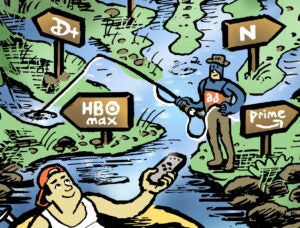 “On TV And Video” is a column exploring opportunities and challenges in programmatic TV and video.
“On TV And Video” is a column exploring opportunities and challenges in programmatic TV and video.
Today’s column is written by Jayson Dubin, founder and CEO at Playwire.
Last year, viewers spent more time watching digital video than ever before. In 2011, adults spent an average of 21 minutes watching online video every day, and by 2015 that number had increased to one hour and 16 minutes.
As a result, the US digital video advertising market is on pace to nearly double by 2019. As one of the most high-impact ad units available, video drives higher CPM and incremental ad revenue. This is all good news for brands and content creators that have already implemented video.
Video also can bring other, perhaps unexpected, advantages for publishers. Video advertising, for example, is five times more engaging than banners ads.
Yet more than 70% of publishers still do not offer video content, costing them a huge stream of revenue. Between the benefits and lost revenue, publishers will not be able to grow their audience without a strategic video offering.
A Big Benefit: More Time Spent On Site
Video is high-impact and more immersive and engaging than text or static images. However, more importantly, digital video is inherently mobile – as are people. The time people spent on their mobile devices increased 117% in 2015 compared to 2014, and the latest estimates predict that video will account for 70% of all mobile traffic by 2021. Our mobile screens are also getting bigger and displaying at higher resolutions while data speeds are getting faster. Together, these factors are combining to create the most sophisticated mobile video experience to date.
As evidence, look no further than the big players, whether it’s an established publishing institution like The New York Times or Snapchat, the internet’s hottest startup. Both have implemented mobile video as an integral part of viewer experience. In adapting to the consumption preferences of users, time spent on site increases. In turn this deepens brand engagement and opens up new opportunities to sell premium advertising inventory.
Improved SEO
Google’s latest search algorithm ranks video above text, providing a strategic advantage to publishers using video to accompany text. For example, when “Fuller House” was getting ready to make its Netflix debut, one publisher posted a video about the show alongside an article. Shortly thereafter, that video was ranking above Netflix in Google searches around “Fuller House” for a time. When every page visit counts toward potential ad dollars, search ranking can play a huge role in generating additional revenue for publishers, not to mention the higher CPMs generated by video.
Dynamic Brand Personality
Text is literally and figuratively one-dimensional when it comes to establishing and cultivating brand personality. Visuals certainly add another layer of engagement, but video has the ability to really bring a publisher’s site alive. The caveat here is that, for this purpose, video does not mean a montage of static images strung together using background audio.
The human element in creating video content is absolutely crucial in establishing a dynamic brand personality and a real connection with viewers. People have more options than ever before in where they choose to consume online content. Adding a human touch can make the difference in establishing a loyal following and sustained viewership.
Follow Jayson Dubin (@JKDMEDIA), Playwire (@playwire) and AdExchanger (@adexchanger) on Twitter.













